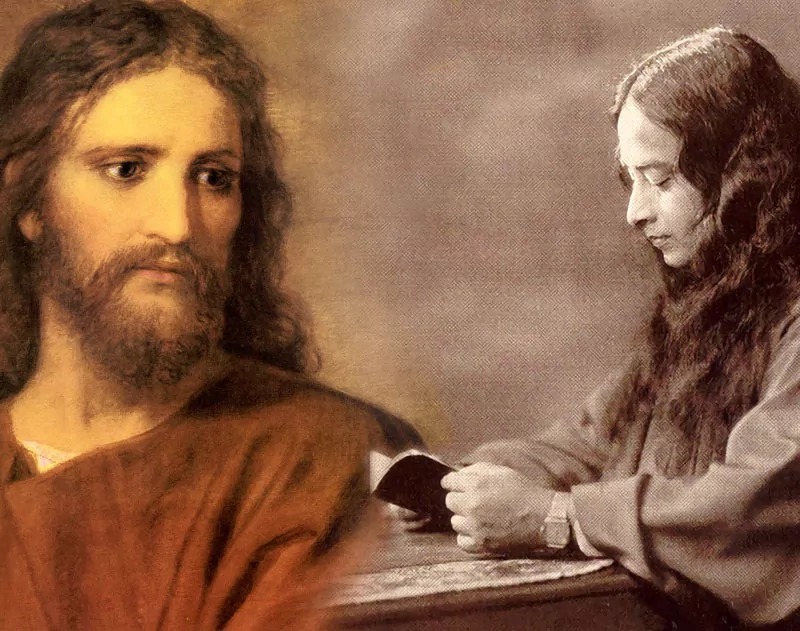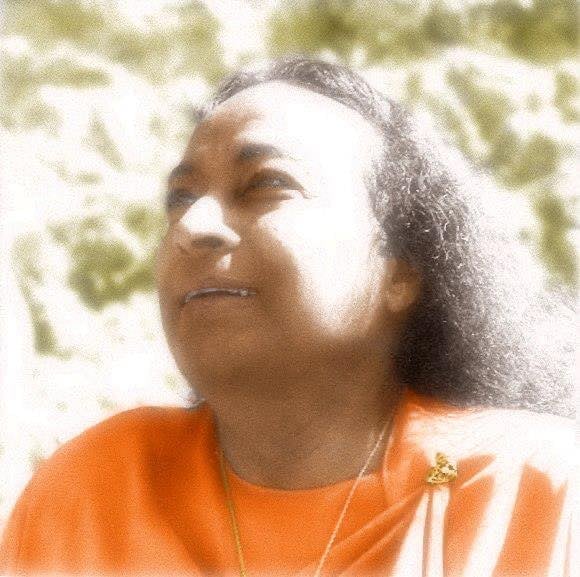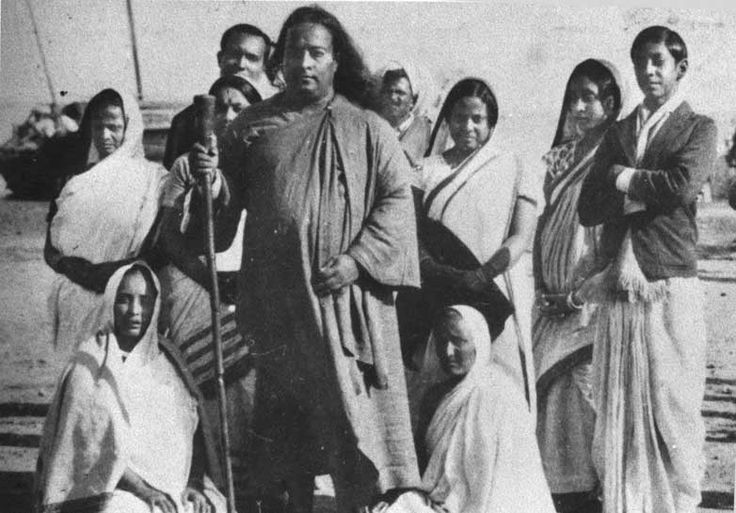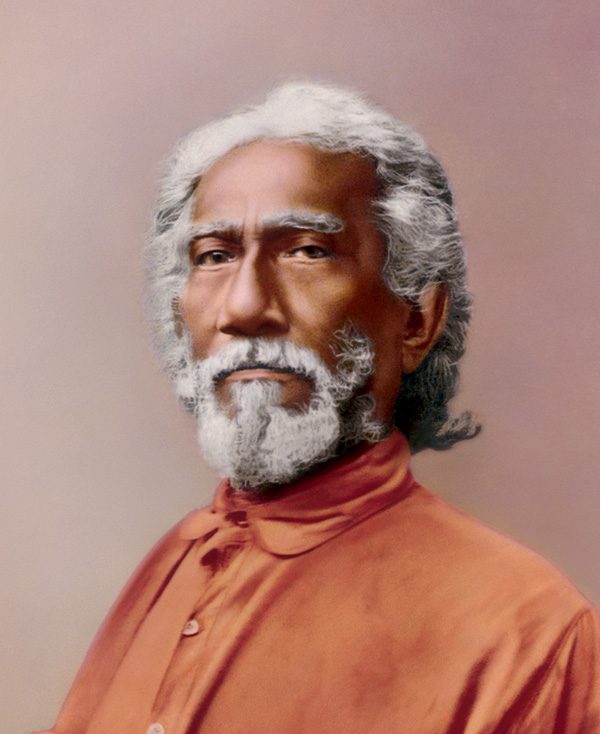God Talks with Arjuna: Paramahansa Yogananda’s Revolutionary Bhagavad Gita Commentary
God Talks with Arjuna: The Bhagavad Gita – Royal Science of God Realization represents one of the most comprehensive and penetrating spiritual commentaries on India’s most sacred text ever published in English. This two-volume work by Paramahansa Yogananda offers a translation and commentary of unparalleled scope, revealing spiritual and psychological truths that have remained obscured by allegory and metaphor for centuries.
Published in 1995 by Self-Realization Fellowship, nearly two decades after Paramahansa Yogananda’s passing in 1952, this monumental work stands as the culmination of decades of spiritual insight and scholarly dedication. It represents a unique approach to understanding the Bhagavad Gita that emphasizes the yoga doctrine and the science of meditation alongside psychological and spiritual development.
Understanding the Significance of the Bhagavad Gita
The Bhagavad Gita is India’s most sacred text and is often referred to as the “Hindu Bible.” The Gita consists of 700 verses containing a dialogue between Lord Krishna and the warrior prince Arjuna on the eve of the Battle of Kurukshetra. However, this surface narrative conceals deeper spiritual truths that have captivated philosophers, saints, and spiritual seekers throughout history.
The Gita addresses fundamental questions that remain relevant across all ages and cultures: What is the purpose of life? How should we live with integrity amid difficult circumstances? What is our true nature? How can we achieve lasting peace and fulfillment? These timeless questions make the Gita as relevant to modern readers as it was to ancient seekers.
Traditional commentaries on the Bhagavad Gita have emphasized different paths: karma yoga (the path of righteous action), jnana yoga (the path of knowledge), and bhakti yoga (the path of devotion). However, Paramahansa Yogananda’s approach stresses something distinctly different—the training of the mind through raja yoga, the science of meditation and direct spiritual experience.
Paramahansa Yogananda’s Unique Interpretation Method
What distinguishes Paramahansa Yogananda’s commentary from other Gita interpretations is his method of understanding the text. Rather than approaching the Bhagavad Gita as a historical document to be analyzed intellectually, Paramahansa Yogananda presents it as an eternal dialogue between the soul and Spirit that unfolds in the consciousness of every sincere seeker.
Paramahansa Yogananda emphasized that his guru, Swami Sri Yukteswar Giri, gave him specific guidance on interpreting scripture: he taught Paramahansa Yogananda to put himself in rapport with the spiritual consciousness of the masters who originally received the revelation—Krishna, Arjuna, and Vyasa. Rather than relying on intellectual analysis alone, Paramahansa Yogananda learned to attune his consciousness to these realized beings and perceive the deeper layers of meaning in their words.
This method represents a departure from scholarly commentary. Instead of offering theoretical interpretation, Paramahansa Yogananda chronicles what he perceived as divine wisdom poured into an attuned soul’s consciousness. The difference is profound: rather than explaining the Gita from an external perspective, Paramahansa Yogananda became Arjuna spiritually and communed with the Divine Intelligence that Krishna represents, perceiving the teachings as if they were being revealed directly to his own soul.
The Two-Volume Structure and Content
God Talks with Arjuna is organized as a two-volume set, with comprehensive explanation of each verse of the original Sanskrit text. The commentary explores multiple dimensions of meaning for each verse:
The psychological interpretation addresses how the Gita’s teachings apply to the human mind and emotions. The text explains how the inner battles described in the Bhagavad Gita—conflicts between positive and negative tendencies, between material desires and spiritual aspirations—mirror the actual struggles that every person faces in daily life.
The spiritual interpretation reveals the deeper yogic principles and techniques for achieving direct experience of God. The metaphorical language of the Gita becomes clear when understood through the lens of meditation practice and spiritual science. What appears to be describing an ancient battle becomes a manual for spiritual development.
The metaphysical interpretation explores the fundamental nature of consciousness, the relationship between soul and Spirit, and the universal principles underlying creation. This dimension of Paramahansa Yogananda’s commentary connects the Gita to the broader framework of yoga philosophy and Kriya Yoga science.

Paramahansa Yogananda’s Central Thesis: The Inner Battle
One of the most important insights in Paramahansa Yogananda’s commentary concerns the true meaning of the Bhagavad Gita’s central metaphor—the battle between the Pandavas and Kauravas. Traditional interpretations have sometimes treated this as a historical narrative or as a simple allegory for good versus evil. Paramahansa Yogananda reveals a more subtle and profound understanding.
According to Paramahansa Yogananda’s interpretation, the real background of the Bhagavad Gita’s message is not an ancient battle observed externally by Arjuna, but rather the continuous and universal conflict between opposing forces within human consciousness. The Gita’s teaching guides people in resolving these internal conflicts in ways that help them achieve genuine spiritual goals and lasting happiness by raising their level of consciousness to higher planes of detachment and wisdom.
This interpretation connects directly to Paramahansa Yogananda’s understanding of human life and struggle. Paramahansa Yogananda explained that from the moment of conception to the surrender of the last breath, humanity must fight in each incarnation innumerable battles—biological, hereditary, bacteriological, physiological, climatic, social, ethical, political, sociological, psychological, and metaphysical battles of many varieties of inner and outer conflicts.
The Gita, according to Paramahansa Yogananda, teaches a specific yoga science for resolving these conflicts. Rather than offering escapism or denial of life’s challenges, the Gita provides practical techniques for maintaining spiritual awareness and equanimity while engaging fully with life’s demands.
The Role of Kriya Yoga in the Gita
A distinctive feature of Paramahansa Yogananda’s commentary is his emphasis on the Kriya Yoga science as the foundational teaching underlying the Bhagavad Gita’s message. While other commentators have discussed various yoga paths mentioned in the text, Paramahansa Yogananda explicitly connects the Gita’s teachings to the specific meditation techniques of Kriya Yoga.
Paramahansa Yogananda’s translation and extensive commentary gives “the spiritual instruction of the scientific techniques for attaining direct personal experience of God, through Kriya Yoga, thereby reversing the descent” from Spirit into matter. This understanding reflects the spiritual lineage through which Paramahansa Yogananda received his own training—a lineage that traces back through Lahiri Mahasaya and Mahavatar Babaji, who revived the Kriya Yoga science for modern times.
The Gita’s descriptions of meditation states, energetic processes, and stages of spiritual development become clear when understood through the framework of Kriya Yoga practice. Paramahansa Yogananda’s commentary thus serves as both a scriptural exegesis and a guide to the meditation techniques contained within the Gita’s verses.

The Unity of Christian and Yogic Teachings
Another major theme in Paramahansa Yogananda’s commentary is his demonstration of fundamental harmony between the teachings of Jesus Christ and the teachings of Krishna in the Bhagavad Gita. This reflects one of the stated aims of the Self-Realization Fellowship: “To reveal the complete harmony and basic oneness of original Christianity as taught by Jesus Christ and original Yoga as taught by Bhagavan Krishna, and to show that these principles of truth are the common scientific foundation of all true religions.”
Throughout his commentary, Paramahansa Yogananda draws parallels between Christ consciousness and Krishna consciousness, showing how both represent the same ultimate reality approached through different cultural and historical contexts. Rather than viewing these as competing religions, Paramahansa Yogananda presents them as expressions of universal spiritual truth adapted to different peoples and times.
This integrative approach has particular relevance for Western readers who come to the Gita from Christian backgrounds. By showing the consonance between Jesus’s teachings and Krishna’s teachings, Paramahansa Yogananda makes the Gita’s wisdom accessible without requiring readers to abandon their existing religious understanding.
The Spiritual Lineage Behind the Commentary
Paramahansa Yogananda’s guru, Swami Sri Yukteswar Giri, was a Jnanavatar, or “Incarnation of Wisdom,” who explained the most significant first nine chapters of the Gita according to Lahiri Mahasaya’s interpretation. This lineage is significant because it ensures that Paramahansa Yogananda’s commentary is not merely personal opinion but represents a transmission of understanding passed through multiple realized masters.
Lahiri Mahasaya himself never wrote any books, but his divine expositions of the scriptures were expressed through the writings of various of his advanced disciples. Among his greatest disciples, Swami Sri Yukteswar, Swami Pranabananda, and Panchanon Bhattacharya recorded his Gita explanations.
Paramahansa Yogananda honored this lineage by acknowledging: “I owe much to my paramgurus, Mahavatar Babaji and Lahiri Mahasaya, and to my Gurudeva, for their revelations, which have inspired the birth of a new presentation of the Gita; and above all, to their grace in blessing my endeavor. This work is not mine; it belongs to them, and to God, Krishna, Arjuna, and Vyasa.”

Paramahansa Yogananda’s Method of Scriptural Attunement
One of the most remarkable aspects of Paramahansa Yogananda’s commentary is his specific description of how he achieved his interpretation. Paramahansa Yogananda states: “I arrived at the spiritual understanding expressed in these pages by attunement with Vyasa, and by perceiving the Spirit as God of creation relating wisdom to the awakened Arjuna within myself. I became Arjuna’s soul and communed with Spirit.”
This approach represents a specific spiritual method taught by Paramahansa Yogananda’s guru, Sri Yukteswar Giri. Rather than relying solely on intellectual analysis of ancient texts, the spiritual seeker can learn to put himself in rapport with the consciousness of the original recipients and transmitters of divine wisdom. Through deep meditation and spiritual attunement, the spiritual realities described in scripture reveal themselves directly.
Paramahansa Yogananda describes learning this method from his guru: “Through the help of a God-realized guru, one learns how to use the nutcracker of intuitive perception to crack open the hard shell of language and ambiguity to get at the kernels of truth in scriptural sayings.”
Paramahansa Yogananda emphasized that “many truths buried in the Gita for generations are being expressed in English for the first time” through his commentary. This claim reflects his conviction that the deepest meanings often lie hidden beneath the surface meaning of words, accessible only through spiritual realization that corresponds to the state of consciousness from which the original scripture was transmitted.
Publication History and Editorial Excellence
The publication history of God Talks with Arjuna reveals the deep dedication of Self-Realization Fellowship to preserving Paramahansa Yogananda’s work with authenticity and care. Paramahansa Yogananda delivered more than 150 talks and classes on the Bhagavad Gita during his time in America. A serialization of his commentary started in Self-Realization Fellowship’s magazine in 1932 and continued for nearly two decades, generating such extensive material that multiple volumes could be compiled from it.
The actual book was prepared for publication after Paramahansa Yogananda’s passing in 1952. Sri Daya Mata, Paramahansa Yogananda’s foremost disciple and first spiritual successor, had the primary task of preparing the manuscript. When Sri Daya Mata later required assistance with final editing and preparation, Mrinalini Mata, another advanced disciple trained directly by Paramahansa Yogananda, completed the work. The involvement of these spiritual successors who received personal training from Paramahansa Yogananda ensures that the commentary maintains authenticity and the spiritual transmission intended by the author.
This careful editorial process resulted in a work that was published in 1995 by Self-Realization Fellowship. The extensive preparation time—over four decades after Paramahansa Yogananda’s passing—reflects the organization’s commitment to presenting his teachings with precision and reverence.
Content Features and Format
God Talks with Arjuna provides multiple layers of content to serve readers at different levels of understanding and engagement. Each verse of the Bhagavad Gita appears in Sanskrit transliteration, Roman transliteration, and English translation. Paramahansa Yogananda’s commentary follows, providing spiritual, psychological, and metaphysical interpretation.
The work includes annotated charts that visually organize complex concepts, making them easier to understand and remember. The commentary on some verses extends to many pages, providing thorough exploration of multiple dimensions of meaning. Other verses receive more concise treatment, with Paramahansa Yogananda’s interpretive focus directed toward the most spiritually significant aspects.
The margins include footnotes and cross-references that connect ideas across different chapters and point readers to related spiritual concepts. This extensive cross-referencing helps readers develop a comprehensive understanding of how the Gita’s teachings form an integrated system rather than disconnected aphorisms.
Beautiful illustrations throughout the work provide visual representation of concepts and help readers envision the spiritual realities being described. These images serve not merely as decoration but as additional communication of the profound truths the text conveys.

Practical Application of Gita Teaching
While God Talks with Arjuna serves scholars and philosophers seeking comprehensive understanding of the Bhagavad Gita, it simultaneously functions as a practical guide for spiritual living. Paramahansa Yogananda bridges the gap between transcendent spiritual truth and everyday human challenges.
Each commentary explores how the principles Krishna teaches to Arjuna apply to contemporary spiritual seekers facing modern challenges. The struggles Arjuna faces—doubt, fear, attachment, questioning of purpose—remain fundamentally the same across all ages. The solutions Krishna offers through the practice of yoga and meditation address these universal human struggles directly.
Readers consistently report that studying Paramahansa Yogananda’s God Talks with Arjuna provides both intellectual satisfaction and genuine spiritual transformation. The book serves equally well for scholarly research and for devotional study that changes how one lives and thinks about fundamental life questions.
Connection to Self-Realization Fellowship Mission
God Talks with Arjuna embodies the stated aim of Self-Realization Fellowship: “To reveal the complete harmony and basic oneness of original Christianity as taught by Jesus Christ and original Yoga as taught by Bhagavan Krishna, and to show that these principles of truth are the common scientific foundation of all true religions.”
Paramahansa Yogananda established Self-Realization Fellowship in 1920 with the specific mission to disseminate the ancient teachings of yoga and meditation to Western audiences. God Talks with Arjuna represents a culmination of that mission, providing a comprehensive scriptural foundation for understanding how yoga science and Christian principles express the same universal spiritual truths.
Where to Purchase God Talks with Arjuna
God Talks with Arjuna: The Bhagavad Gita – Royal Science of God Realization is available through multiple channels, including Self-Realization Fellowship and major online retailers such as Amazon. The work is available in multiple formats including hardcover, paperback, and digital versions to accommodate different reading preferences.
The book is also available through the Self-Realization Fellowship bookstore, which ensures that readers purchase authorized editions with all supplementary materials included. The SRF bookstore maintains the highest editorial standards and provides customer support for readers seeking guidance on this complex and profound spiritual text.
[Purchase God Talks with Arjuna on Amazon]
A Timeless Spiritual Commentary
God Talks with Arjuna: The Bhagavad Gita by Paramahansa Yogananda stands as a unique contribution to world spiritual literature. The work represents the mature spiritual wisdom of one of the most influential spiritual teachers of the 20th century, combined with the careful editorial stewardship of Self-Realization Fellowship to preserve the authentic transmission of Paramahansa Yogananda’s teachings.
For readers seeking deeper understanding of the Bhagavad Gita, this commentary offers unparalleled comprehensiveness and spiritual insight. For those engaged in serious meditation practice and spiritual development, Paramahansa Yogananda’s explanations provide practical guidance rooted in direct spiritual realization and validated by the testimony of countless sincere students.
Whether approached as a reference work for scholarly study or as a devotional text for daily contemplation, God Talks with Arjuna offers what Paramahansa Yogananda promised: the revelation of timeless spiritual truths expressed in language and concepts accessible to modern consciousness while maintaining the profound depth of the original ancient wisdom.
Watch this talk by Paramahansa Yogananda and learn more about the Bhagavad Gita:








